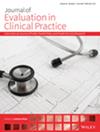Effectiveness of Quality Control Circle-Based Nursing Quality Improvement in Reducing DRG Costs in General Surgery: A Cross-Sectional Survey Study
Abstract
Background
The implementation of Diagnosis-Related Group (DRG) payment systems globally has intensified pressure on healthcare institutions to control costs while maintaining quality. Quality Control Circles (QCCs) have emerged as a promising continuous quality improvement method in nursing management. This study investigated the effectiveness of QCC-based nursing quality improvement on DRG cost control in general surgery departments.
Methods
A cross-sectional survey was conducted among 50 healthcare professionals (18 physicians, 21 nurses, 8 nursing quality control staff, and 3 others) in a general surgery department. The survey assessed QCC implementation intensity, DRG knowledge, nursing improvement effects, and cost control obstacles. Descriptive statistics, Spearman correlation analysis, and Mann-Whitney U tests were performed to analyze relationships between variables.
Results
QCC implementation showed high intensity scores (M = 4.16, SD = 0.93) with strong correlations to standardized operational procedures (ρ = 0.798). Nursing quality improvements were substantial (M = 4.38, SD = 0.73), and higher scores in key dimensions such as standardized preoperative education and multimodal analgesia were associated with fewer postoperative complications and shorter length of stay, thereby directly supporting DRG cost control.
Conclusion
QCC-based nursing quality improvement demonstrates effectiveness in supporting DRG cost control in general surgery through standardized processes and enhanced nursing practices. Among these achievements, the rationalization management score of high‑value consumables was the highest (M = 4.40), directly reducing the proportion of consumables cost within the DRG group, which makes the cost‑control effect more specific and clinically meaningful. The findings suggest that systematic implementation of QCC methodologies can facilitate both quality improvement and cost containment objectives within DRG payment frameworks.
Clinical trial number: Not applicable.


 求助内容:
求助内容: 应助结果提醒方式:
应助结果提醒方式:


